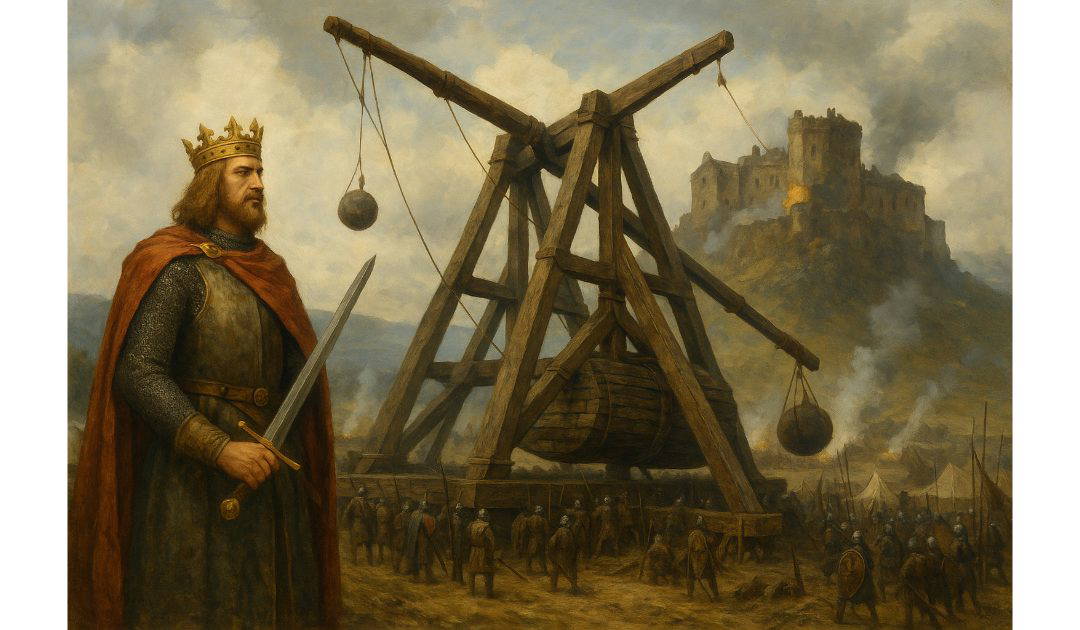On the 24th of July, 1304, King Edward I of England (Longshanks) took Stirling Castle, during the Wars of Scottish Independence, using War Wolf, believed to be the largest trebuchet ever made.
War Wolf, also known as “Ludgar” or simply “the Warwolf,” was a colossal trebuchet constructed by the forces of King Edward I of England during the Siege of Stirling Castle in 1304. This awe-inspiring siege engine epitomised the pinnacle of medieval military engineering. Edward I commissioned War Wolf to subdue the rebellious Scots, demonstrating not only his military might but also his determination to assert dominance over Scotland.
Trebuchets were formidable siege weapons designed to hurl large projectiles over great distances. Operating on the principles of counterweight mechanics, they used gravity to generate immense force. War Wolf was exceptional both in size and power, dwarfing other contemporary siege engines. Historical accounts suggest it could launch projectiles weighing over 300 pounds (approximately 136 kilograms), capable of shattering stone walls and instilling terror among defenders.
The construction of War Wolf was an engineering feat, involving skilled carpenters, engineers, and labourers. Built from robust timber, reinforced with metal fittings, and powered by a massive counterweight, it required meticulous planning and considerable resources. The assembly reportedly took several months, reflecting Edward I’s strategic patience and commitment to efficiency. Its design incorporated a long sling and sturdy framework, ensuring maximum range and impact.
Interestingly, War Wolf’s deployment was as much a psychological weapon as a physical one. During the siege, the defenders of Stirling Castle, witnessing the looming threat of this gigantic trebuchet, offered to surrender. However, Edward I, keen on showcasing War Wolf’s might, refused their surrender until he had the chance to test his masterpiece. This decision highlights the symbolic power Edward attributed to his war machine; it wasn’t merely about victory but about sending a clear message of dominance.
When finally used, War Wolf demonstrated devastating effectiveness. It launched massive boulders with such force that the castle’s fortifications crumbled under the relentless bombardment. The sheer impact demoralised the defenders, hastening the end of the siege. Its success further cemented Edward I’s reputation as a formidable military strategist and reinforced the effectiveness of siege weaponry in medieval warfare.
The legacy of War Wolf extends beyond its immediate military achievements. It represents a significant moment in the evolution of siege technology, showcasing the medieval capacity for complex engineering and logistical coordination. Additionally, its story reflects the broader context of the Wars of Scottish Independence, illustrating the lengths to which Edward I went to impose English rule over Scotland.
In conclusion, War Wolf was more than just a trebuchet; it was a symbol of medieval ingenuity and the ruthlessness of kingship. Its construction and use during the Siege of Stirling Castle exemplify the fusion of engineering prowess and psychological warfare. Today, War Wolf remains an iconic example of medieval siegecraft, embodying the relentless ambition of Edward I and the formidable spirit of medieval military innovation.

